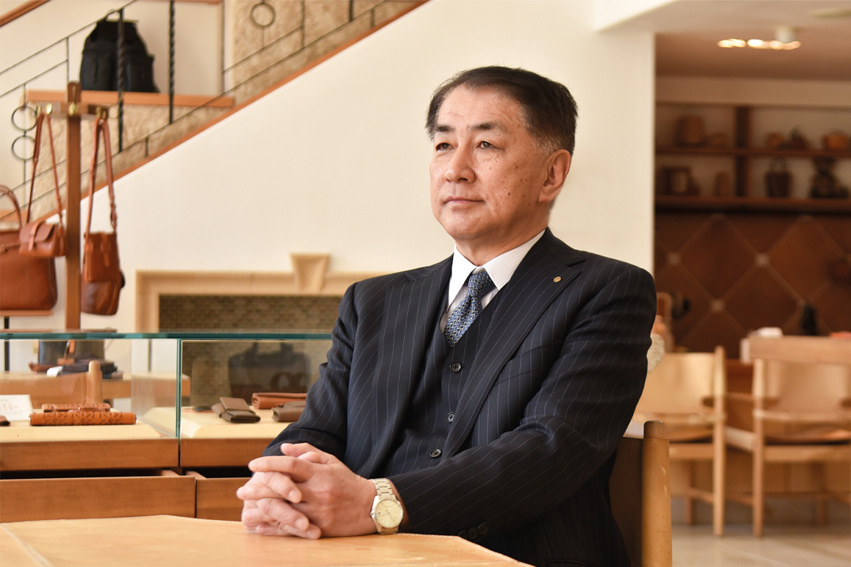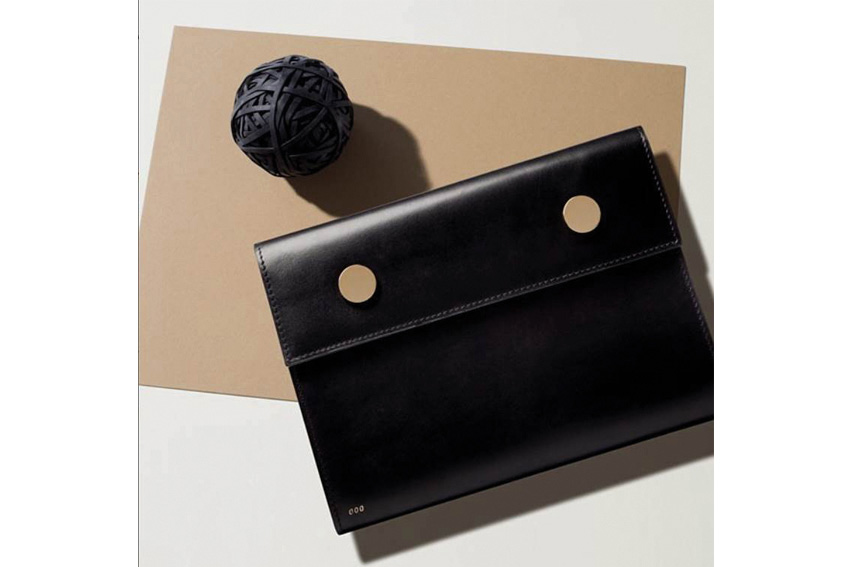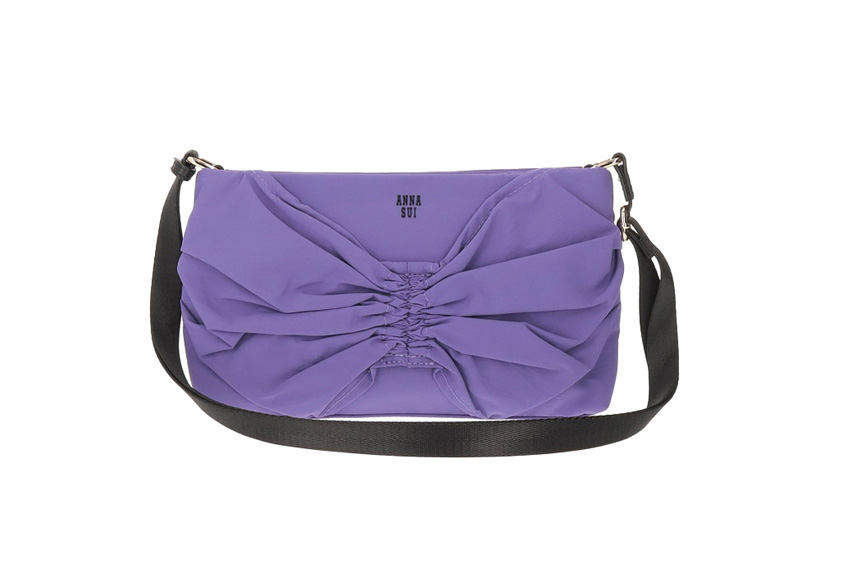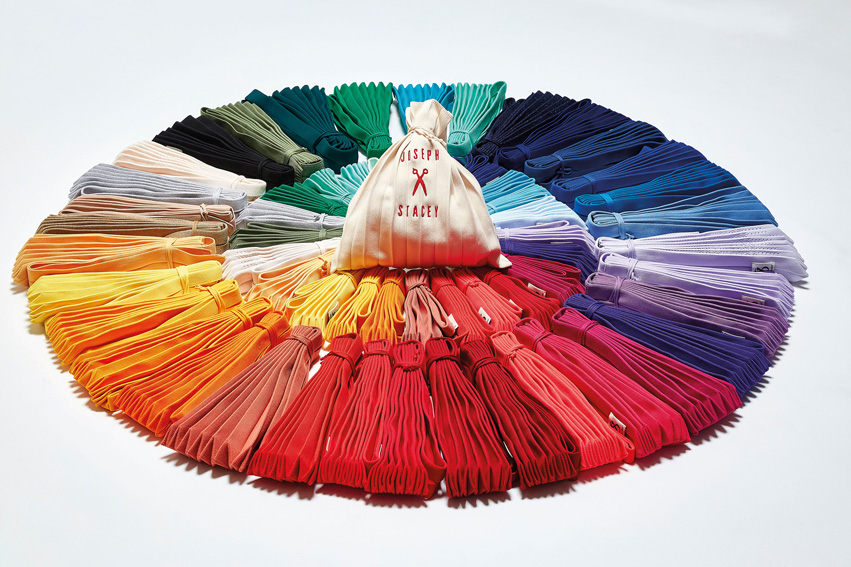In an increasingly fast-moving industry, the eco-friendly bag manufacturer prides itself on its resilient production base and ability to react first.

Could you start by giving us a quick introduction to your company? What are Kuipo’s core strengths and what sets your company apart from your competition?
Our market share valuation is JPY 1 trillion. However, the product mix changed about 20 years ago, and whereas luxury brands accounted for 30% they now account for 70%. It means that our profile keeps changing. On the lady segment side, however, over the past 20 years, many smaller companies have ceased to exist.
You might be asked how our company was able to survive. One reason I can say this is because our production base is quite resilient. We have a production site in Thailand and many partner manufacturers. Our distribution network is quite diversified including big department stores. These stores are still operating strongly in Japan but in recent decades specialty stores have also become quite popular. In regards to tanned leather, we have our own special route because we have a contract with an Italian manufacturer which has been going strong for 30 years. We have a long history of tanning leather.
Of course, these days many people are talking about sustainability and eco-friendliness, but our firm has been promoting these kinds of activities for over 25 years now so we are trying to spread more information in this regard to our clients. Of course, we would love to purely focus on eco-friendly products, but at the same time Japanese consumers’ preferences are quite diversified. If we simply present good leather with simple designs it won’t satisfy all customer needs. Therefore we may have to still treat leather in ways that might not be eco-friendly. I do understand that companies around the world are all trying to incorporate more sustainability and eco-friendliness.
As you know, Japan is influenced by Western countries, so Gen-Z is much more SDG-conscious than baby boomers or millennials. This is why we are trying to make sure our clientele are aware of our strengths in such areas. However, there are many issues on the pricing side. Uniqlo for example sells a lot of bags under JPY 3,000 and on the other hand, Prada sells bags at a significantly higher price. Prada is able to do so since they have a wonderful history as a luxury brand. What I want everyone to understand is that we as a company are focusing on creating a significant and foundationally strong starting point as a base. What it means is that we do have great potential to become number one in the future.

Plastic bags are nowadays seen as an environmental concern due to the significant harm they can do to the environment. In light of this, you have developed your vegetable-tanned leather that has a low environmental impact. How does the durability of vegetable-tanned leather bags compare to conventional plastic bags?
Compared to nylon and plastic products, vegetable-tanned leather has a much longer lifespan if you treat it right. However, when compared to conventional, chemically treated leather there really isn’t a difference as far as durability goes. However, one of the strengths of vegetable-tanned leather is to enjoy the change of ‘face’ with well-used.
You mentioned the younger segment of society and how they prefer to use more eco-friendly products, however, consumers of different age groups stay informed in different ways. Middle-aged individuals rely on traditional media like television and learn about fashion through commercials. Meanwhile, seniors often receive fashion insights through traditional channels such as mailers. How do you adapt to the evolving consumer preferences across different generations?
We are not trying to meet the varying tastes of different generations because we started out thinking that our products would appeal to non-gender-specific people. Even middle-aged people are now beginning to absorb information about sustainability. Additionally, we are seeing a lot of parents learning from their children.
Japan is the world’s oldest society with a declining demographic line due to low birth rates. In the next 15 years, one in three people is expected to be over the age of 65 leading to a labor crisis and a shrinking domestic market. What are some of the challenges and opportunities this demographic situation has presented to your firm?
From a production point of view, I noticed that there are quite a few young people who are interested in manufacturing. Right now we are trying to internalize our production processes and we have two employees who are master craftsmen, but there was a time when we had 15. Now that I know there are many interested in this type of career I am trying to broaden the scope and recruit those who are interested.
Another thing that is plaguing Japan is the fact that there are plenty of manufacturing experts who do not have anyone in line to take over once they retire. We are trying to collaborate more with such manufacturers to ensure that their skills and accumulated knowledge are passed on to the next generation.
We currently have a plant in Thailand but there was a time we were considering putting a plant in Cambodia. If there is a country with hard-working people we would like to shift our production there.
After the COVID-19 pandemic, many retail stores tried to recover and unfortunately, as a result of the damage caused by global lockdowns, many firms had to shut their doors. Nowadays retailers are looking to online shops and e-commerce as effective channels to reach their audience. Your firm offers your products through a number of online retailers. How has your business adapted to take advantage of this growth in e-commerce and can you tell us more about the advantages of e-commerce platforms?
We started e-commerce activities over 10 years ago now but back then we didn’t really have the infrastructure in place to fully leverage these channels. Fortunately, when COVID-19 came we were fully prepared and we saw the potential to grow online sales during the pandemic period. Right now, 20% of our revenue comes from e-commerce and the percentage keeps growing every year.
When it comes to products like ours the feel or the texture is an important factor. We do have some shops in department stores where customers can feel the real products for themselves before then going home and ordering online. We are trying to integrate a combination of both physical stores and our e-commerce platform together in order to provide customers with a unique experience.

Now that COVID-19 has ended many companies are trying to build innovative and unique in-store experiences in order to bring customers back to physical locations. An important aspect of your products in particular is the need to touch the real product in order to understand the quality. As such, can you explain to us what type of in-store experience you are providing to your customers when they come to your stores?
We have conducted some pilot workshops where people can come and try making their own leather products under the guidance of a craftsman. Additionally, we have made it possible for customers to order their own original products so we are trying to use these two initiatives to appeal to customers.
The fashion accessory market was valued at USD 1.4 trillion dollars in 2023 growing to USD 3.7 trillion in 2023 with a compound growth rate of 14.56% annually. Leading this expansion are regions such as Asia-Pacific, China, and North America. Demand for sustainable and environmental solutions will drive growth which should be profitable to the second-hand apparel industry. The luxury market is also a key market in the apparel industry; it is projected to more than double in size from 2022 to 2028. How do you foresee the evolution of the fashion accessories market over the next 12 months?
What I assume is that some of the smaller companies will simply phase out of existence, and chances are this will happen through M&As. We must also remember that fashion is for fun and enjoyment. It is designed to enrich our lives and we shouldn’t forsake everything just for the sake of sustainability and SDG values. There may be companies that start out with these SDGs as their vision but may not be able to continue keeping fun in fashion while retaining their values. Also, there will be others that technically cannot uphold those values. In that way, only those who have the capabilities to emphasize the fun aspect of fashion as well as sustainability will be able to survive and thrive in the end. We must also never forget the importance of developing new materials.
One product that stood out during our research was your Genten Mousse 2Way Shoulder Large. This goat leather bag features a molded base, beautiful drape, and hand-stitched sophisticated design. How is the Genten Mousse 2Way Shoulder Large better than other bags developed by competing brands?
There are two factors; number one, Japanese workers, and those trained by Japanese workers do a really good job. Their superiority with their handiwork is second to none. Another reason is our pricing strategy, and the tariff for leather in Japan is quite high in order to protect the domestic market, but we are able to import from our Thai plant, therefore avoiding high costs from tariffs. If a similar company tried to make the same product without processing in our Thai plant their costs would be 1.5 times higher.
Kuipo sells its products through various brands overseas including Joseph and Stacey, Pierre Cardin, and Gherardini among many others as well as having licensing agreements with global major non-luxury brands. How do Kuipo’s collaborations with international brands contribute to the promotion and sales of your products on an international scale? Are you looking to further expand this network, and if so, where?
Even though the name Kuipo might not be well known, they do know some of the famous brands that we are handling. We can gain customers’ trust through our lineup, so I think that is the key advantage of working with famous brands. Many of the brands are now being acquired by firms in China, Hong Kong, and Japan, although when it comes to fashion, France and Italy still lead the world, especially when you are talking about leather products. For this reason we will continue to look at France and Italy for further development going forward.
At the same time, we must not ignore the potential of India. The country now has a huge population so, therefore, we are continuing to gather information there. As a production site as well as a distributor for our products, India holds great potential.

In many interviews with key players in the industry we have often heard the importance of collaborations, partnerships, and open innovation as a way to unlock international markets and develop new products. Are you currently looking to participate in overseas fashion shows or collaborate with other designers?
That is an important point and we are always on the lookout. The approach should be different depending on the region specifics, for example, in China we need to work with local partners whereas in other Asian countries, it is better to start subsidiaries. Coming up with the correct strategy comes as a result of conducting research. At the same time, if we strengthen a brand we may get a reverse request from local companies, therefore we do consider it important to make our brands as strong as possible.
Prime Minister Kishida has announced that the Japanese government is looking to attract more than 60 million tourists to come to Japan by the year 2030. This can be a huge benefit to your firm since tourists will be coming to Japan to buy products because of the weakened JPY. What strategies will you employ in order to raise brand awareness and attract tourists to come to your stores and buy your products?
For Chinese tourists, opening social network accounts and promoting through those channels will be vitally important. For other countries we are not looking for an aggressive approach, rather we would like customers to find us through their own research.
What message would you like to spread around the world regarding Kuipo?
Our company is a rare breed in Japan since we’ve created an environment at our company where women can be active and achieve high positions. Our staff is strongly female in terms of ratios, especially with women holding managerial positions. This isn’t a recent trend either, it has always been this way.
Our company remains flexible yet strong, and this is because we want to become the leading company in Japan in our field. The landscape is always changing so we need to be flexible in order to react first.
0 COMMENTS